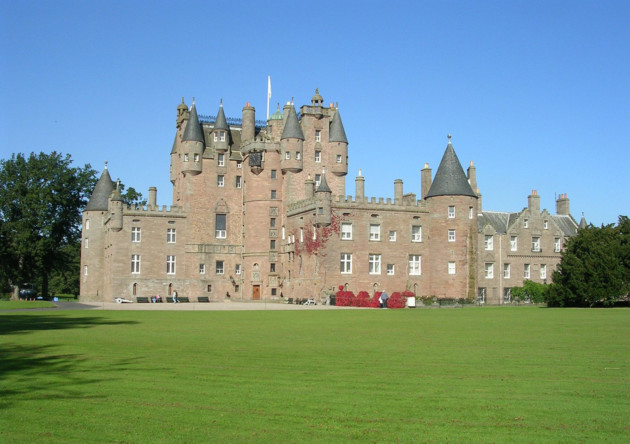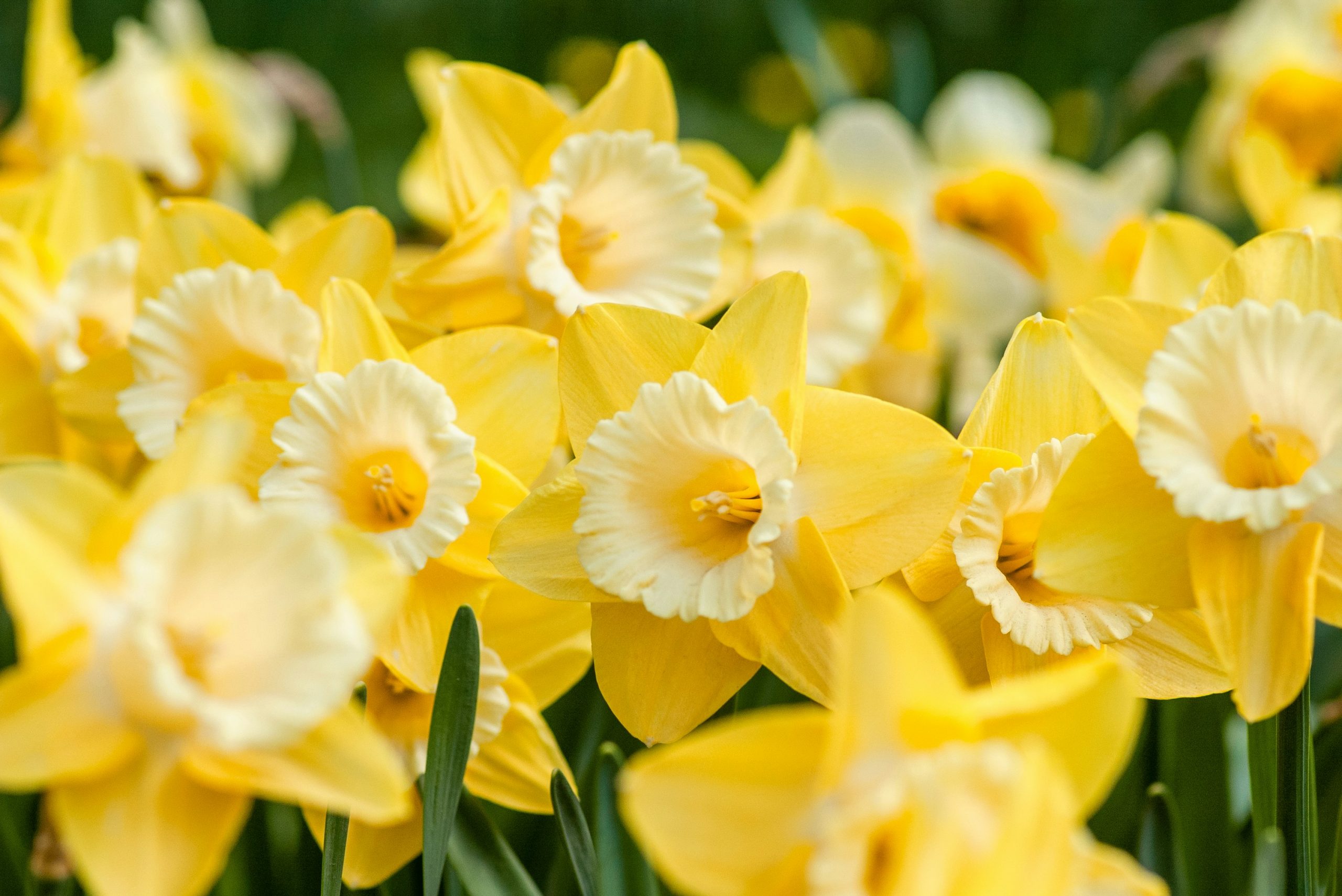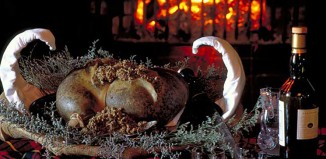Discover why Glamis Castle in Scotland is the stuff of fairytales
Vicky Sartain
Scotland is home to an assortment of spellbinding fortresses, but Glamis Castle – a spectacular multi turreted affair lying at the foot of the Angus glens – sets the standard.
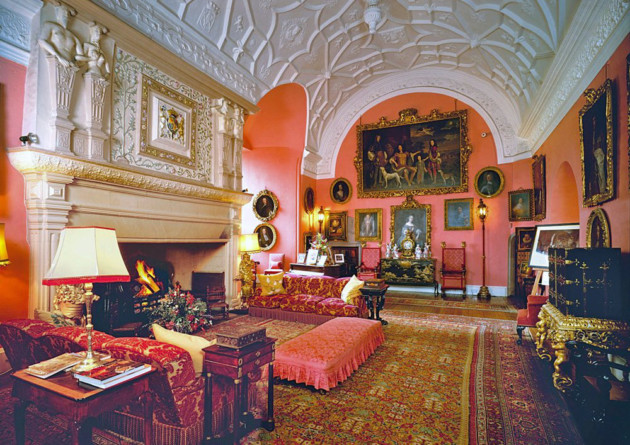
The Drawing Room houses a Jacob de Wet painting, one of hundreds of art works throughout. Image courtesy Glamis Castle
As the likely inspiration for Shakespeare’s tragedy, Macbeth, Glamis is thought to be where the tragic character carried out the murder of King Duncan in the 11th century, in order to claim the crown for himself. Certainly, records acknowledge that in 1034 King Malcolm II died at the castle and his heir Duncan I would also lose his life in dubious circumstances. Castle guide Pauline Cawdery is well accustomed to entertaining groups with tales of the castle’s murky history. One of her favourite stories features a former Earl, said to have made a deal with the Devil during a game of cards one Saturday night, only to be sealed inside a secret room ever since, where he and a friend are destined to play cards for all time. It’s not hard to imagine such events in this ancient stone residence where staircases spiral out of sight and medieval weaponry and suits of armour stand guard. “One thing the castle doesn’t have are dungeons, which visitors always expect to see,” confirms Pauline.
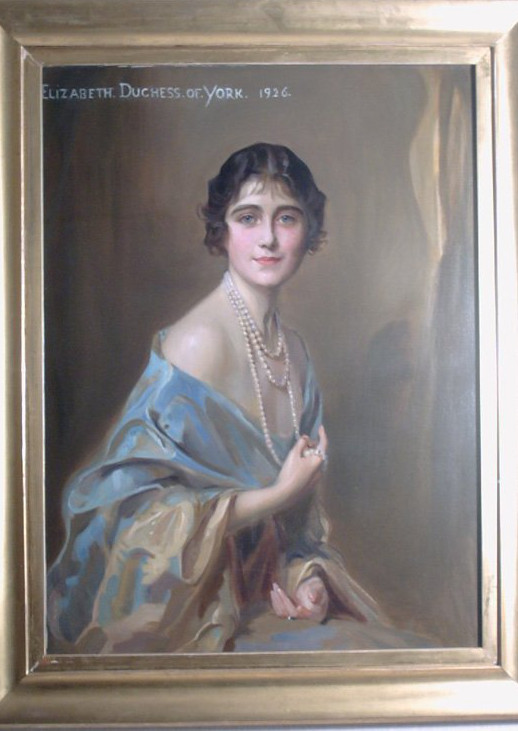
Duchess of York. Image courtesy Glamis Castle
Glamis remains the private property of the Strathmore family, who began the building of a castle on the site in the 14th century on the marriage of King Robert II’s daughter, Princess Joanna, to one of the king’s aides, Sir John Lyon in 1376. The title of Strathmore was granted in the 15th century. It is from this lineage that the Queen Mother, Elizabeth Bowes-Lyon descended, born to Lord and Lady Glamis in 1900. “She spent her childhood at the castle and when she married the Duke of York in 1923, the couple holidayed here regularly,” says Pauline. “Elizabeth loved Glamis. She spent part of her honeymoon here, her daughter Princess Margaret was born here in 1930, and the Queen Mother was 100-years-old on her last visit.”
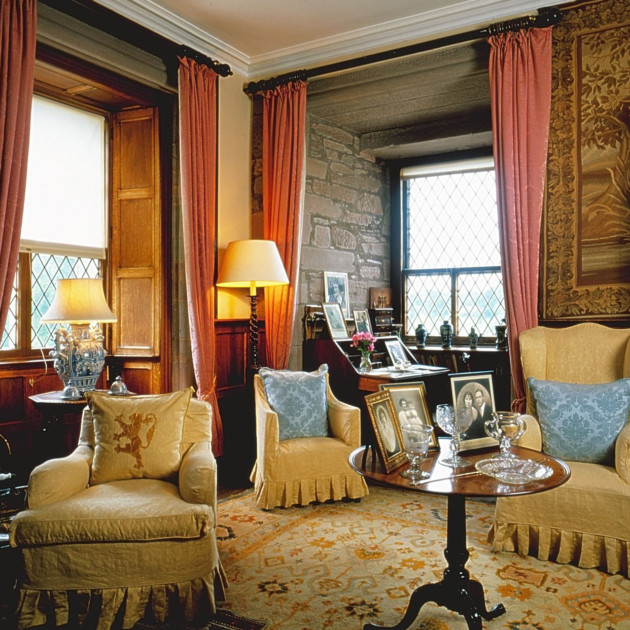
The Queen Mother’s Sitting Room is kept just as it was when the young Elizabeth and her new husband visited for their holidays between 1923 and 1939. Image courtesy Glamis Castle
Public tours explore 10 of the castle’s 125 rooms and follow the history of the building from its original heart, in the formidable central tower, through the principal rooms including the Queen Mother’s royal apartments.
The Drawing Room is one of the most impressive rooms, complete with barrel vaulted early 17th-century Italianate ceiling, opulence and rich colour. “This room is still used occasionally by the family during high days and holidays,” says Pauline. With its enormous fireplace taking up half the length of the room, complete with hearth seating, it should be the warmest place in the castle. The overmantel is decorated with the symbols of nations: thistles and roses intertwine around James I’s coat of arms – the first king to unite Scotland and England in 1603. Statues on either side show Hermes and Aphrodite, who according to Greek mythology loved each other so much they became one, in this case symbolising the happy alliance of nations.
“The castle escaped unscathed where others fell to medieval conflicts but during the Civil War, Oliver Cromwell’s men were billeted here for a few months, burning all the furniture on their departure, so the majority of pieces seen date after 1650,” explains Pauline. During this time the soldiers left behind some of their armour, a few items of which menacingly adorn the central tower. One piece bears the scars of conflict with a deadly piercing, more than certainly created by musket fire.
Glamis has captured the imagination of many, including Shakespeare and Sir Walter Scott, while its likeness has inspired art, photography and even featured on the Scottish £10 note. An unofficial art gallery, the castle contains hundreds of works, with just a fraction on public display. One of note in the Drawing Room, painted by the Dutch artist Jacob de Wet, shows the flamboyant 3rd Earl, Patrick Lyon, who remodelled the castle and formally landscaped the gardens in the 17th century. Further developments ensued during the 18th century as fashions for a more natural landscape swept away formality. The East Wing was added in 1773, and by 1775 the West Wing had been torn down as the family reconsidered their ideas of what constituted the ideal stately home. Castellated perimeter walls featured among their priorities during the 19th century, along with an underfloor heating system to warm the castle’s central staircase, and two well stocked icehouses in the grounds.
The Family Chapel, which is seen on the public tour, is thought to be haunted by former 16th-century resident, Janet Douglas, Lady Glamis, commonly known as the Grey Lady. Records state that she was falsely accused of treason and witchcraft against James V of Scotland, who badly wanted the castle for himself. For this, she was burned at the stake in Edinburgh on July 1537. Her teenage son, John narrowly escaped the subsequent death sentence set for his 21st birthday, released after an official pardon that withdrew claims against his mother and restored his freedom and the Glamis estate to Lyon ownership.
Of the 95 paintings in the chapel, the most prized is a Jacob de Wet, dated 1688, depicting Christ wearing a hat in disguise as a gardener. “I’m told there are only six such scenes worldwide,” confides Pauline.
The tour continues in the Billiard Room where a photo shows a young Elizabeth Bowes-Lyon seated at the 19th-century Erard baby grand piano, a main feature of the room. “This room began as a library in the 18th century and we have over 2,000 books on show,” says Pauline. “During the First World War, Glamis Castle became an auxiliary hospital for military personnel. The soldiers would come to this room to play snooker.” Marks around the table are from the cigarettes laid down on the sides while the soldiers played their shot. “All the soldiers were made comfortable at Glamis and Lady Elizabeth Bowes-Lyon was a great favourite of theirs,” adds Pauline.
For those who enjoy a more tangible sense of history, the connections with the current royal family are in welcome contrast further on in the tour, where the austerity of the castle gives way to the warmth of an Edwardian family household. In the Queen Mother’s Sitting Room, the wing-backed armchairs and family photographs hint of modern use, the room kept just as it was when the young Elizabeth and her new husband, the Duke of York visited for regular holidays between 1923 and 1939. “The couple loved it here; they could roam the estate, indulging their passion for country sports,” explains Pauline. Tapestries decorate the walls, and ornaments and feminine fabrics lend an air of genteel society. In the Queen Mother’s Bedroom are further family momentoes, paintings and her original 18th-century canopy bed.
The journey concludes as it began, plunging the visitor back into the world of legend in the austere Duncan’s Room, where the unfortunate medieval king was said to have met his end.
Outside, a stroll across the grounds leads to delightful formal gardens, where a host of budding flowers await the summer sun and views extend across sprawling acres to the peaks of the glens beyond.
Glamis Castle, Glamis, Angus DD8 1RJ. Tel: 01307 840 393; www.glamis-castle.co.uk

